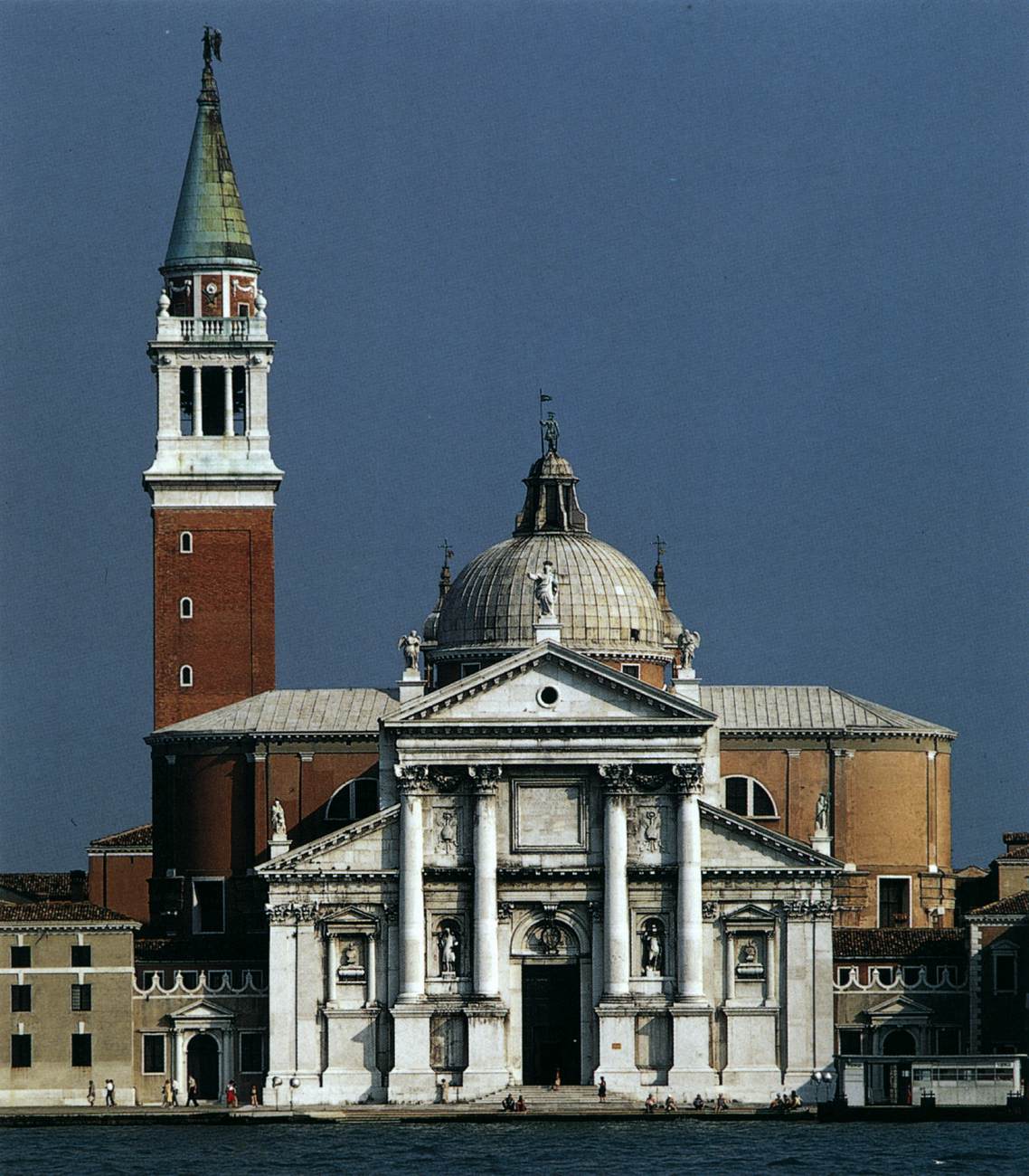Italian architect. While a young mason, he was noticed by an Italian scholar and soon found himself studying mathematics, music, philosophy, and Classical authors. He was trained as an architect in Vicenza, and later in Rome he examined the remains of Roman architecture. The measured drawings he made of these were published with compositions of his own and, based on the treatise of Vitruvius, a description of practical systems of design and proportioning. This famous work, I quattro libri dell'architectura (1570, tr. The Four Books of Architecture, 1716), has been reissued many times. It was possibly the most influential architectural pattern book ever printed.
Palladio's buildings, chiefly town palaces and villas, were executed mostly in Vicenza and its vicinity. Usually they were made of humble materials that contrasted with their formal classicism. Palladio's first important work (begun 1549) was to rebuild the medieval town hall, the basilica at Vicenza. He designed arches supported on minor columns and framed between larger engaged columns. Each of these arch-and-column compositions formed what is termed a "Palladian motif" and was much imitated. The characteristic façade of many of Palladio's country houses displayed the classic temple front-superimposed pilasters or columns or often a colossal order two stories in height and supported by a rusticated ground story. Generally in his buildings he systematized the ground plan, designing a central hall around which other rooms were grouped in absolute symmetry. Though Palladio absorbed contemporary Mannerist motifs, his plans and elevations always retained a repose and order not associated with Mannerist architecture.
Among his best-known houses (built in the 1550s and 1560s) are his most widely copied villa, the Villa Rotonda (overlooking Vicenza), the Chiericati Palace and the Valmarana Palace (both: Vicenza), and the Villa Barbaro (Maser). At Venice he adapted the classical motif to three church façades, in his designs for San Francesco della Vigna, San Giorgio Maggiore (begun 1566), and Il Redentore (begun 1576). Just before his death Palladio planned the Teatro Olimpico, in which he incorporated a permanent scenic background, built in architectural perspective.
Reviving and redesigning the ancient Roman villa for a new humanist age, Palladio set the vocabulary of architectural pattern, proportion, and ornament for much of Western domestic architecture for centuries to come. His books and buildings exerted an unparalleled influence on European and American architecture. In the 17th century, Inigo Jones imported Palladio's classic grandeur of design into England and profoundly influenced the course of English architecture. Subsequently, William Kent, Colin Campbell (1676-c. 1729), Sir Christopher Wren, Sir William Chambers, and others created a great body of works termed Palladian. In the United States his influence can be seen in the manor houses of southern plantations, e.g., Thomas Jefferson's Monticello.
//
![]()









